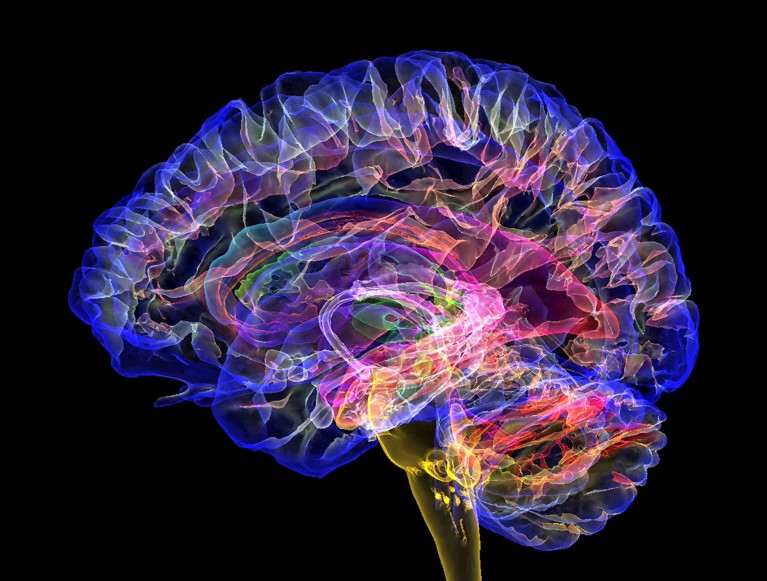How does the brain control consciousness? This deep-brain structure


The inner structures of the brain are difficult to investigate without surgery.Credit: K H Fung/Science Photo Library
Neuroscientists have observed for the first time how structures deep in the brain are activated when the brain becomes aware of its own thoughts, known as conscious perception1.
The brain is constantly bombarded with sights, sounds and other stimuli, but people are only ever aware of a sliver of the world around them — the taste of a piece of chocolate or the sound of someone’s voice, for example. Researchers have long known that the outer layer of the brain, called the cerebral cortex, plays a part in this experience of being aware of specific thoughts.
The involvement of deeper brain structures has been much harder to elucidate, because they can be accessed only with invasive surgery. Designing experiments to test the concept in animals is also tricky. But studying these regions would allow researchers to broaden their theories of consciousness beyond the brain’s outer wrapping, say researchers.
“The field of consciousness studies has evoked a lot of criticism and scepticism because this is a phenomenon that is so hard to study,” says Liad Mudrik, a neuroscientist at Tel Aviv University in Israel. But scientists have increasingly been using systematic and rigorous methods to investigate consciousness, she says.
Aware or not
In a study published in Science today1, Mingsha Zhang, a neuroscientist at Beijing Normal University, focused on the thalamus. This region at the centre of the brain is involved in processing sensory information and working memory, and is thought to have a role in conscious perception.
Participants were already undergoing therapy for severe and persistent headaches, for which they had thin electrodes injected deep into their brains. This allowed Zhang and his colleagues to study their brain signals and measure conscious awareness.
The participants were asked to move their eyes in a particular way depending on whether they noticed an icon flash onto a screen in front of them. The icon was designed so that the participants would be aware of its appearance only about half of the time.
During the tasks, the researchers recorded neural activity in multiple regions of the brain, including the thalamus and the cortex. This is the first time that such simultaneous recordings have been made in people doing a task that is relevant to consciousness science, says Christopher Whyte, a systems neuroscientist at the University of Sydney in Australia. The work “is really pretty remarkable”, he says, because it allowed the team to look at how the timing of neural activity in different regions varied.
Gatekeeper
Source link



